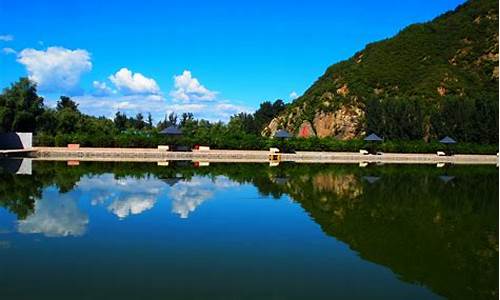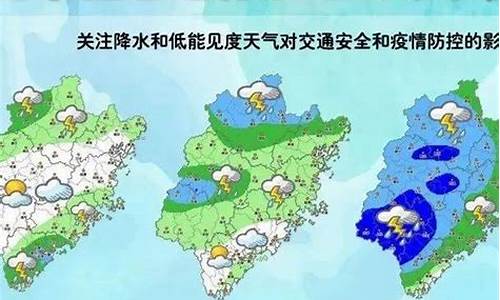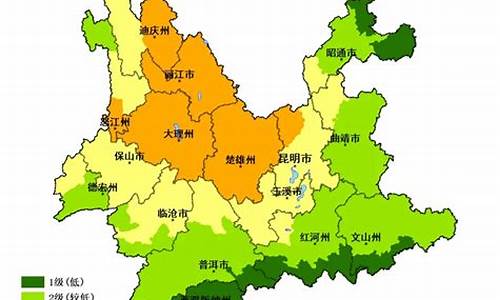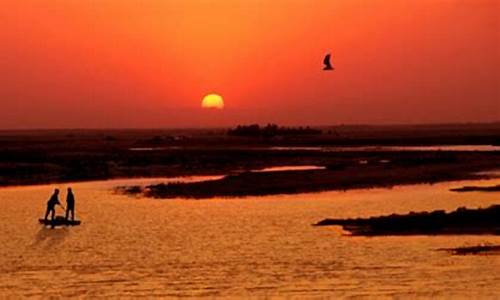美国气候特征描述_美国气候特点英文介绍
1.用英文介绍一个国家
2.悉尼最常见什么天气 用英语写
3.用英语写出成都的一年四季的气候特点写出一段短文
4.用英语介绍美国地理
5.谁有亚热带气候的 英文介绍

纽约,于1624年建城,现属于纽约州管辖。纽约市位于美国大西洋海岸的东北部,是美国最大城市及最大港,也是世界第一大经济中心,被人们誉为世界之都,纽约市是一座全球化的大都市,也是世界级城市,并直接影响着全球的媒体、政治、教育、以及时尚界。纽约与英国伦敦、日本东京并称为世界三大国际大都会。纽约市还是众多世界级博物馆、画廊和演艺比赛场地的所在地,使其成为西半球的文化及中心之一。
纽约的气候比较温和,但在季节转换时,还是会出现高温和低温变化。一月份平均气温为摄氏零度,七月份则潮湿闷热,平均气温达摄氏26度。纽约的四季分明,春天春意盎然,夏天会出现30度以上高温,偶有阵雨;而冬天气温常在零度以下,且经常下雪。
用英文介绍一个国家
洛杉矶属于温带地中海型气候,全年气候温和。大体上终年干燥少雨,只是在冬季降雨稍多。年降水量约378毫米,以冬雨为主。平均最高气温23.3℃,平均最低气温13℃。
洛杉矶坐标为34°03′—西经118°15′,坐落在三面环山、一面临海的开阔盆地中。面积约1291平方千米。洛杉矶除局部为丘陵外,全市地势平坦,平均海拔为84米,最高点是埃尔西峰,高约1548米。
扩展资料:
1542年,第一批到达洛杉矶的欧洲人,宣布该地是西班牙帝国的天国(theCityofGod),但并未长留该地。1781年,洛杉矶成为西班牙殖民地。1818年,美国人首次到达该地。1821年,洛杉矶归属墨西哥。1846年,美墨战争中墨西哥失败,后将加利福尼亚州割让给美国,洛杉矶成为美国领土。1848年,西部“淘金热”吸引来大批移民来到洛杉矶。
1850年,洛杉矶正式设市,同年加利福尼亚成为美国第31个州,而当时的洛杉矶人口仅有1600人。19世纪末20世纪初,洛杉矶成为了一座特大城市。20世纪20年代,**业和航空工业都往洛杉矶汇集,从而促进了该市进一步的发展。20世纪80年代,洛杉矶成为全球重金属音乐之都。而到了21世纪之后,洛杉矶已成为美国最重要的经济中心之一。
截至2016年,洛杉矶被划分为洛杉矶县、奥兰治县、文图拉县、河畔县、圣伯纳迪诺县、贝弗利希尔斯、帕萨迪纳和长滩八个区域。
洛杉矶是美国西部最大的经济中心,占加利福尼亚州劳动力市场的30%,全市产值约为加利福尼亚州的1/3,占加利福尼亚州零售和批发量的25%以上。汽车工业、电子工业、金融业及旅游业在其经济中占有重要地位,洛杉矶最大的汽车制造厂即设在此地。
参考资料:
悉尼最常见什么天气 用英语写
The United States is a Federal Republic constitutional country. It is composed of Washington, D.C., 51 States and many overseas territories such as Guam.
美国是一个联邦共和立宪制国家。由华盛顿哥伦比亚特区、51个州和关岛等众多海外领土组成的。
Its main part is located in the central part of North America. The United States is an immigrant country with a total area of 9.373 million square kilometers, a population of 333 million and a common English language.
其主体部分位于北美洲中部,美国中央情报局《世界概况》1989年至1996年初始版美国总面积是937.3万平方公里,人口3.33亿,通用英语,是一个移民国家。
美国的成立:
美国原为印第安人的聚居地,15世纪末,西班牙、荷兰、法国、英国等相继移民至此。
1775年,爆发了美国人民反抗大英帝国殖民统治的独立战争。
1776年7月4日,在费城召开了第二次大陆会议,由乔治·华盛顿任大陆军总司令,发表《独立宣言》,宣布美利坚合众国正式成立。
1783年独立战争结束,英国承认13个殖民地独立。
1787年通过美国宪法,成立联邦制国家
用英语写出成都的一年四季的气候特点写出一段短文
你好这位朋友,我帮你在澳大利亚气象局和Wikipedia找了悉尼的气候资料,整合为英文如下:
Sydney has a temperate climate with warm summers and cool winters, with rainfall spread throughout the year. The weather is moderated by proximity to the ocean, and more extreme temperatures are recorded in the inland western suburbs. The warmest months are January and February, with an erage air temperature range at Observatory Hill of 18.7–25.9 °C for January and 18.8–25.8 °C for February. An erage of 14.9 days a year he temperatures of more than 30 °C.
In winter, temperatures rarely drop below 5 °C in coastal areas. The coldest month is July, with an erage range of 8.0–16.3 °C. Rainfall is fairly evenly spread through the year, but is slightly higher during the first half of the year. The erage annual rainfall, with moderate to low variability, is 1,213.8 mm, with rain falling on an erage of 143.5 days a year. Snowfall was last reported in the Sydney City area in 1836, while a fall of graupel, or soft hail, mistaken by many for snow, in July 2008, has raised the possibility that the 1836 event was not snow, either. Extreme temperatures he ranged from 45.8 °C on 18 January 2013 to 2.1 °C on 22 June 1932, the lowest recorded minimum at Observatory Hill. At the Sydney Airport station, extremes he ranged from 46.4 to ?0.1 °C.
另外附上悉尼一年四季的天气情况一览表:
希望以上信息对你有帮助,如果有哪里看不懂的可以告诉我。
记得要纳满意答案哦 ?:-)
用英语介绍美国地理
In Chengdu,basically November to March is indeed sort of gloomy,and it will probably be rainy and a little chilly.There is a layer of fog-like gray (but not fog) that's nearly perpetually over the sky,but the weather is warm enough for you to wear just a sweater outside.In the summer though,it is definitely not gloomy.It's bright and sunny most days of the week with more visible blue skies than in the larger,more polluted cities,but it's VERY humid and hot.It's known to be a humid region.During the autumn,sometimes it will be gloomy and rainy,and sometimes it will be a fine day with clear autumn sky and crisp air.It's foggy and dry in winter,but not cold.It seldom to he snow there,only one or two times per year.
谁有亚热带气候的 英文介绍
The United States is located in southern North America, east to the Atlantic,
West Pacific, north of Canada, South to Mexico and the Gulf of Mexico. The whole
territory from east to west can be divided into 5 geographical regions: the
coastal plain in southeastern coastal plain is divided into two parts of the
Atlantic and Mexico coastal plain. This is an area of at an elevation of 200
meters below, the majority formed by the alluvial rivers, especially the
Mississippi River Delta, Delta, the world's largest soil and oil, fertile soil.
There are some swamps near the mouth of the river. Located in the geographical
area of the Florida Peninsula is the United States of America's largest
peninsula.
The Appalachian Mountains located in the west of the Atlantic
coastal plain, basic parallel with the coast, more than 2300 km long, the
general elevation of 1000 ~ 1500 meters, composed of several parallel mountains.
The plain was inverted triangle, long North American and Canadian border, south
the Atlantic Coastal Plains along the Rio Grande river. Western mountains from
the west is composed of two mountains, east of Rocky Mountains, west of the
Sierra Nevada mountains and the cascade mountains. A product of the old fold
after exercise. Whitney Nevada mountain peak 4418 meters above sea level, as the
United States, the highest point, the Cascade Mountains of Mount Rainier 4392
meters, after Whitney peak. Western mountain plateau by the Colorado plateau,
Wyoming plateau, Columbia Plateau and the Grand Canyon, the most complex
geological structure in the western region of the United States of america. The
Grand Canyon is located in the northwest part of Arizona, a series with many
twists and turns, perplexing and deep valley gorge, the momentum of the
majestic, steep rock wall, as the world's rare natural landscape. The United
States has numerous rivers and lakes, water complex, in general can be divided
into three major river systems: where is located in the east of the rocky
mountains into the the Atlantic River are called the Atlantic river system,
mainly in the Mississippi River, Connecticut River and the Hudson river. The
Mississippi River is full-length 6020 kilometers, ranking third in the world.
Where a river called into the Pacific Ocean water. Mainly in the Colorado River,
Columbia River, Yukon etc.. North America east of the Great Lakes group.
Including Lake Superior, Lake Michigan, Lake Huron, Lake Erie and lake Ontario,
a total area of 245000 square kilometers, is the world's largest freshwater,
known as the "North American Mediterranean", the Michigan lake is the United
States of America, the other 4 Lake as the United States and canada. Lake
Superior is the world's largest freshwater lake, the lake area in the world only
to the Caspian Sea and ranked the second in the world.
In most parts of
the United States of America's climate is temperate and suropical climate,
only the tip of the Florida Peninsula tropical. Northern California is located
in north latitude 60 to 70 degrees, is the cold Arctic climate zone; Hawaii
Prefecture is located to the south of the Tropic of cancer, is a tropical
climate zone. But because the United States has a vast territory, complicated
terrain, different climate. Can be divided into 5 climatic zones: the northeast
coast temperate climate zone. This area because of the impact, the Labrador
Current and the cold northern winter, the erage January temperature is -6 ℃,
mild and rainy in summer, in July the erage temperature is about 16 ℃. Average
annual precipitation is about 1000 mm. Southeast suropical climate zone.
Because of the influence of Mexico gulf stream, warm and humid climate, the
erage January temperature is 96 ℃, the erage July temperature of 24 ~ 27 ℃,
the erage annual rainfall of 1500 mm. Central Plains continental climate zone.
This area is characteristic of the climate, the winter cold, in January, the
erage temperature of -14 ℃, hot summer, the erage temperature in July up to
27 ~ 32 ℃. Average annual precipitation is 1000 ~ 1500 mm. The western plateau
dry climate zone. The regional inland climate, large temperature difference
between the plateau last year, Colorado plateau temperature up to 25 ℃. The
erage annual precipitation 500 mm below the desert plateau, less than 250 mm
of precipitation. Along the coast of the Pacific Ocean Climate zone. Winter in
the region, with plenty of rainfall. In January the erage temperature over 4
℃, the erage July temperature of 20 ~ 22 ℃. Average annual precipitation is
about 1500 mm.
The United States agricultural, mineral and forest
resources play a decisive role, plays a role in the world. The United States of
America's geographical location, climate and terrain structure is be richly
endowed by nature. The United States agricultural land (cultivated land and
pasture) of about 430000000 hectares, accounting for all of earth agriculture
with around 10%. Abundant rainfall, fertile soil, of the world's total grain
output of 1/5, the main agricultural products such as wheat, corn, soybean,
cotton, meat production ranks first in the world.
The United States is
rich in mineral resources, iron ore, coal, natural gas, lead, zinc, silver,
molybdenum, zirconium, uranium output occupies the world front row, but
strategic resources such as titanium, manganese, tin, cobalt, chromium, nickel,
mainly rely on imports. The total coal reserves of 35996 tons, the total oil
reserves of about 24000000000 tons, natural gas reserves of 5603400000000 cubic
meters.
The United States has 1800000000 hectares of forest, accounted
for about 31.5% of the total land area, the main tree species are pine,
ponderosa pine, American white pine and oak class.
://.meteorologyclimate/Suropical-climate.htm
Sub-tropical climate map
Suropical climate refers to zones in a range of latitudes between 30/40° and 45°. The hot season duration is longer, while the cold season is milder and rainy. A sub-type is the Mediterranean climate.
A suropical climate implies that the air temperature never goes below -15°C in winter. This is a critical threshold temperature for a gamut of suropical plants, including hardy palms, live oak, crape myrtle, and Southern magnolia.
://.britannica/ebi/article-198804
The suropics are the zones of the Earth immediately north and south of the tropic zone, which is bounded by the Tropic of Cancer and the Tropic of Capricorn, at latitude 23.5 ° north and south. The term 'suropics' describes the climatic region found adjacent to the tropics, usually adjacent to either the north or south pole latitudinal. However, suropical zones can exist north of many temperate zones, and so the temperate zones can only be distinguished from suropical based on winter temperatures.
The term refers to locations outside the tropics where winters are mild and often snowless, allowing for the growth of broadleaf evergreens, in contrast to temperate regions which he cold winters and mainly deciduous or coniferous flora. A suropical climate implies that the air temperature never goes below -15°C in winter. This is a critical threshold temperature for a gamut of suropical plants, including hardy palms, live oak, crape myrtle, and Southern magnolia. Even the coldest suropical places he winter temperatures eraging at least 4°C (with daytime highs around 9°C and lows around 0°C). An example of such a borderline climate is Victoria, British Columbia. Suropical climate zones are roughly bounded in the north by USDA Hardiness Zone 7a. The poleward limit of such climates is higher on the west coasts of the northern continents and lower on the east coasts, because occasional Winter cold snaps reach farther south in the east.
In certain areas of the world the suropics are plagued by hurricanes or typhoons (in the northern hemisphere), or tropical cyclones (in the southern hemisphere) that originate in the tropics in the summer and fall (when the wet seasons occur), but in usual circumstances, these storms should stay well within the tropical boundaries. Suropical locations don't usually he distinctly wet or dry seasons, and he a fairly even distribution of rain throughout the year.
Sometimes suropical climates exist at surprisingly northern locations, including places like Scotland and British Columbia, due to the prevailing maritime winds keeping winters warm.
Example of suropical cities include:
Australia: Brisbane and Sydney
Middle East: Cairo, Jerusalem, Baghdad
Europe: Rome, Lisbon
United States: Houston, Atlanta, Sannah, New Orleans, Orlando and Tampa
声明:本站所有文章资源内容,如无特殊说明或标注,均为采集网络资源。如若本站内容侵犯了原著者的合法权益,可联系本站删除。












